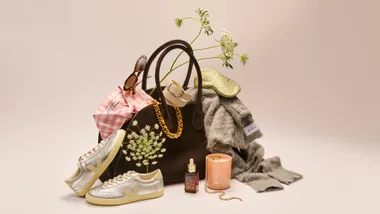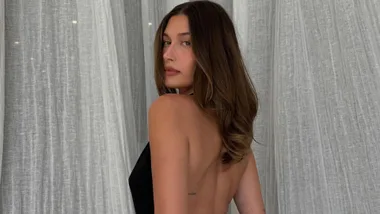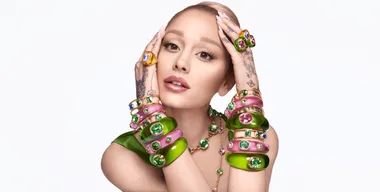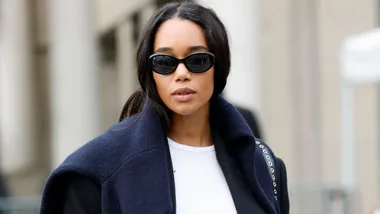Aboriginal and Torres Strait Islander Readers, Please Be Aware That This Story Contains The Name Of A Person Who Is Deceased
To the naked eye it might have seemed that First Nations fashion just miraculously appeared one day on the Australian fashion scene, bringing fashionistas to tears with spellbinding collections and securing magazine covers faster than Paul McCann’s couture hits the red carpet.
Surprisingly, this is no fairytale but a cultural renaissance: 60,000 years of sustainable design revived by the original descendants. Now, a new generation of artisans are screen- printing, weaving and pattern-making their way into fashion history.
One such creative is Denni Francisco, founder of esteemed label Ngali, who became the first Indigenous designer to secure a standalone show at Australian Fashion Week (AFW). Francisco mesmerised this year’s audiences with her collection Murriyang, which means “skyworld” in the Wiradjuri language.
With more than 25 years of fashion experience, Francisco has twice been named Designer of the Year at the National Indigenous Fashion Awards (NIFA). She says her next goal is to present her designs internationally, “using fashion as a medium to take the amazing artwork off the walls or out of exhibitions and have it show up anywhere in the world”.
Presenting Indigenous talent to a global market is also the goal of this year’s NIFA Business Achievement Award winner, Ikuntji Artists, which was the first arts centre to land a solo how at AFW.
Based at Haasts Bluff (230 kilometres west of Alice Springs), and known for its fine art, kinship and historical ties to the renowned Papunya Tula Artists, Ikuntji is now switching lanes, moving into the wearable art space.
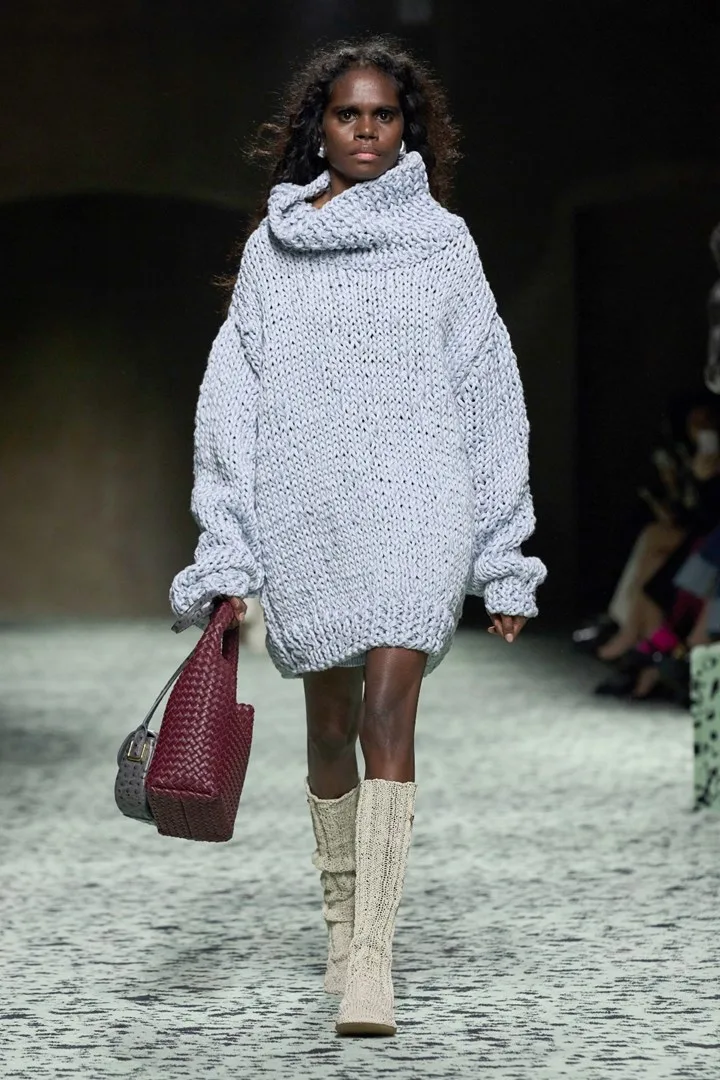
It’s the first Central Desert arts centre to release a textile collection, and it’s a collection like no other. Screen-printed on fabric, its vibrant brushstrokes, decisive linework and cultural symbols are sentimental yet sacred, and include themes of the Tjukurrpa (dreaming) and generational stories of women’s business, waterholes, rockholes and mountains. “The sandhills I paint are my mother’s story, and the rocks I paint are my own story,” says Keturah Zimran of Ikuntji Artists.
The ethos driving the collection is to empower everyone wearing the designs to feel beautiful because of the strength of the stories in them, says Ikuntji Artists manager, Dr Chrischona Schmidt. It helps reaffirm that size-limiting fast-fashion trends are outdated. The collection, adored by celebrities such as Leah Purcell, Jessica Mauboy, Patty Mills and Celeste Barber, is many a stylist’s go-to for star-studded events.
If you thought the fashion accolades were over, buckle up. Named in the AFW 2023 IMG Next Gen emerging designer program and also opening the show, Liandra founder Liandra Gaykamangu left colour-block fans dreaming of summers in Santorini, thanks to
the swimwear from her River Run collection.
“It gave the brand a chance to be recognised as one of the next big brands to come out of the Australian fashion scene,” says Gaykamangu.
Her focus is to become a globally recognised label and create opportunities for remote Indigenous creatives and models in East Arnhem Land. Despite making major waves in the fashion scene this year, the designer credits her highlight as seeing her niece Tarlisa Gaykamangu walk in the Bottega Veneta show in Milan. She is the first Indigenous Australian model to appear at Milan Fashion Week.
The international visions of Ikuntji Artists, Francisco and Gaykamangu feed into the bigger success story of Australia’s fashion and textile industry, which is now worth $27 billion – $7.2 billion of that being export revenue. Forecasters predict First Nations fashion (aka FNF) has the potential to plate a multi- million-dollar slice of that pie.

Promising as these figures are, and despite the injection of funding from Australia Council for the Arts (now called Creative Australia), Australian Fashion Council and Indigenous fashion programs, some FNF insiders query how the $27 billion is distributed, arguing industry support isn’t enough.
FNF is seen as a step towards closing the gap, embedding a Voice in Australian fashion, and building generational wealth, self-determination and autonomy, but many say the money isn’t flowing through to creatives.
They ask why FNF designers still need GoFundMe pages to be able to present at New York Fashion Week, why remote and rural creatives need to cover freight and transport costs to attend industry events, why some of their collaborations are grossly undervalued.
Grace Lillian Lee understands the struggles. She’s a Cairns-based artist, founder of the not-for-profit First Nations Fashion + Design (FNFD) and winner of the Carla Zampatti Award for Excellence in Leadership at the 2021 Australian Fashion Laureate Awards.
Lee notes that the FNF industry faces extra constraints on upskilling, raising capital, scaling, local production and distribution. “The industry is entering unprecedented waters crossing over to commercial success,” she says. “It needs proper investment, time and support for the sector to really flourish.”
Alongside change-makers such as Mob in Fashion, KIN, Blak Lens, Blak List and Jira Models, FNFD is striving to overcome these challenges with its The Iconic x FNFD Incubator Program.
Gunggandji designer Elverina Johnson, one of three incubator participants, says securing a spot was “icing on the cake”. The program has propelled Johnson into brand and design development with her mentor, Kinga Csilla, to launch her label Pink Fish. Asked if FNF designers can reach Zimmermann status, Johnson is hopeful. “The designers that inspire me – the height that I’m trying to reach – are Sass & Bide,” she says.
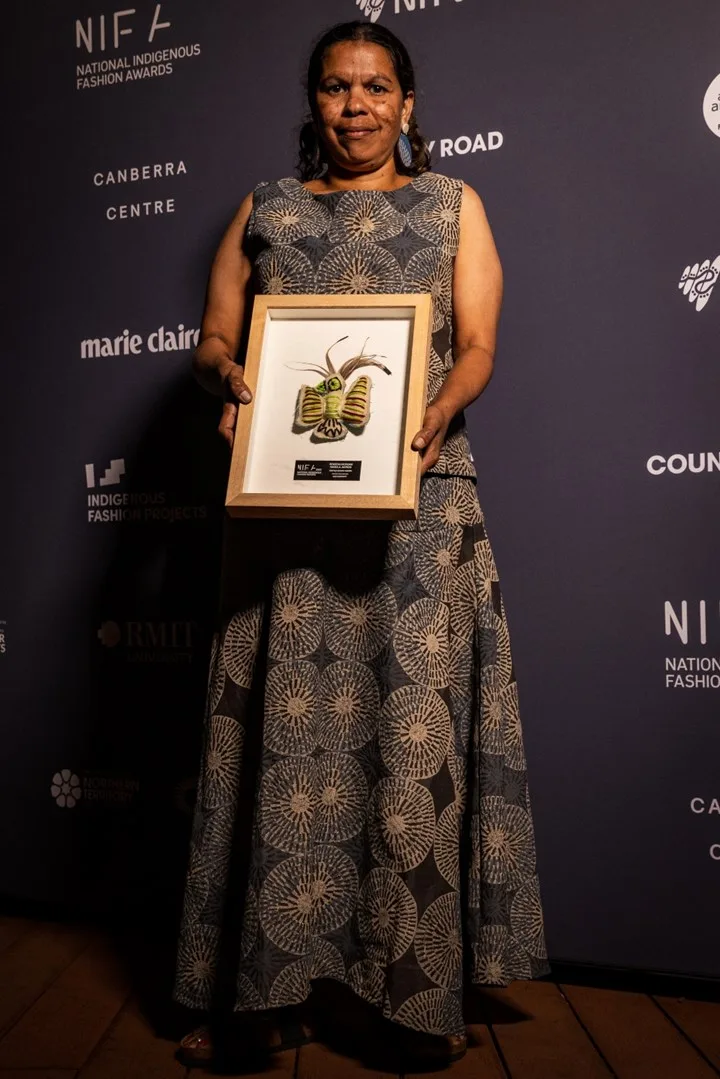
Myrrdah designer Jaunita Doyle says that before Incubator, “We knew nothing. We were just winging it.” Now, confidently supported by P.E Nation’s Pip Edwards and By Johnny’s Johnny Schembri, and with powerhouse businesses The Iconic and Bonds on speed-dial, Doyle says the contacts obtained through Incubator will hopefully help guide the business to becoming a household name.
To realise just how fast FNF is growing, one can simply look at Indigenous Fashion Projects’ runway earlier this year. The remarkable presentation involved seven emerging FNF designers: Ihraa Swim, Joseph & James, Gali Swimwear, Lazy Girl Lingerie, Miimi & Jiinda, Kamara Australia and Gammin Threads.
“We’re doing something right,” says Claire Summers, executive director of Darwin Aboriginal Art Fair (which presents the NIFAs), reflecting on this year’s record-breaking 66 award nominations and two Country to Couture runways showcasing 22 collections.
Whether you caught Country to Couture: Our Legacy, Our Heart runways live on Larrakia Country or just saw the Instagram highlights, you would have been tempted to max out your credit card, swept up by the grandeur and unspeakable joy.
This year’s NIFA Wearable Art Award winner was Rhonda Sharpe of Yarrenyty Arltere Artists. Inspired by her great grandmother Old Laddie, Sharpe’s winning piece was a monumental dillybag made from upcycled artwork: bush-dyed blankets, sheepskin and a cotton-silk stitched handle constructed using ancient techniques.
The emu feathers decorating the dillybag rim were gifted by another artist from a hunting trip, and represent Old Laddie’s generous spirit – the “sharing of food”. Sharpe says that a bonus to constructing the work is that “sewing makes me feel happy and proud.”
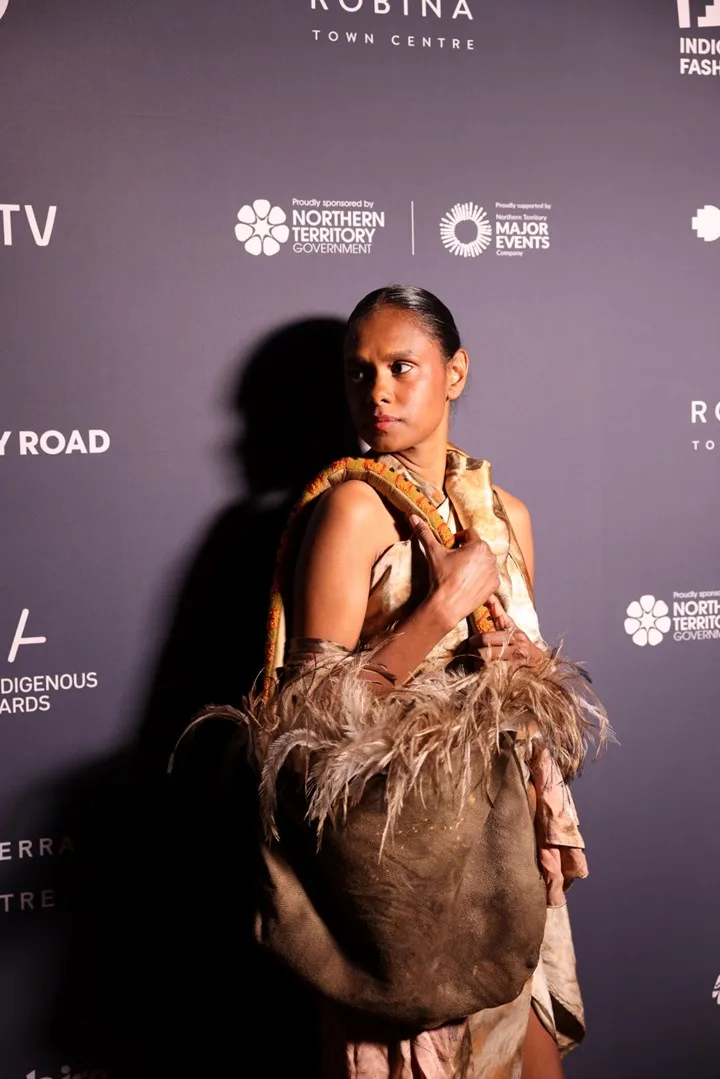
Meanwhile, Kija and Gnoonyandi designer Rowena Morgan has been keeping a lid on her professional development plans with RMIT after winning NIFA’s Textile Design Award. Morgan reminisces about her high-school love of lino-block textile design, with which she serendipitously reunited after moving to Broome and undertaking a two-week TAFE course at Nagula Jarndu (“Saltwater Woman”).
This year, Morgan has entered new territory, exploring carving and burning techniques and Styrofoam boxes to add dimension to her work, and different colourways through acrylic and waterpaints. Of course, inspiration from Broome’s breathtaking sunsets, beaches
and turquoise water always helps.
Morgan is curious about delving into fashion, but she wants to “teach more women and girls – to inspire them – there are beautiful centres like Nagula Jarndu that they can come to”.
Yolngu elder Lucy Wanapuyngu is committed to sharing her traditional knowledge with the next generation. Considered an alchemist by her peers for her splendid dye-making and fibre-art weaving, Wanapuyngu learnt to twine by watching her mother and old people when she was a child. “My granddaughters are learning about fibre-art,” she says. “What for? For the future – for when I’m no longer here. So, in the future they will know what to do.”
Wanapuyngu is one of the talented artists from Gapuwiyak Culture and Arts centre, which won the Traditional Adornment Award and the Community Collaboration Award with Aly de Groot in the 2023 NIFA.
The award-winning pieces were inspired by a 1930s photo taken by Donald Thomson depicting Yolngu designs. Motivated to revive their traditional art practices via contemporary fashion, the master weavers repurposed cotton, linen and silk garments.

The result was a striking goddess gown and scarf imbued with colours resembling the East Arnhem Land sun. Complementary woven accessories included a sunhat, fan-shaped earrings, corset belt and dillybag, all created in fibre-art soaked in earthy dyes produced from roots, berries and leaves. Together they delivered a delightful interpretation of luxury resort wear – Yolngu style.
Lillardia Briggs-Houston, who spent years entering fashion competitions to “track her progress”, can now put NIFA’s Fashion Designer of the Year Award on the mantlepiece next to her 2022 NIFA Wearable Art Award.
The Wiradjuri, Gangulu and Yorta Yorta designer’s dream of setting up “a fashion and textile house on Country in rural New South Wales” is now within reach, further supported by a one-year mentorship with Country Road. Briggs-Houston credits her fashion prowess to her maternal grandmother, Bessie Johnson, born on Warangesda Mission.
A dressmaker, Bessie taught Briggs-Houston pattern drafting as a girl. She then followed in her grandmother’s footsteps by studying fashion at TAFE before launching her label in 2019.
As purposeful as it is nostalgic, Briggs-Houston’s size-inclusive collection Walumarra (meaning “custodian” or “to protect”) is a documentation of cultural-heritage mapping in collaboration with Murrumbidgee Archaeology and Heritage, a project to protect and preserve cultural sites on her Country.
“I felt helpless working on Country and seeing all these sites being damaged and destroyed,” explains Briggs- Houston. The designer can spend many days dyeing, weaving and embellishing to create just one exquisite bag (narrbang), from silk, eucalypt and bottlebrush seed.
Like so many First Nations designers, FNFD’s Grace Lillian Lee is looking to the future. “I think Indigenous fashion is many things, but there’s a greater purpose – it’s something that empowers us moving forward into our journeys,” she says. And what an incredible journey it’s been so far.
 Getty
Getty


